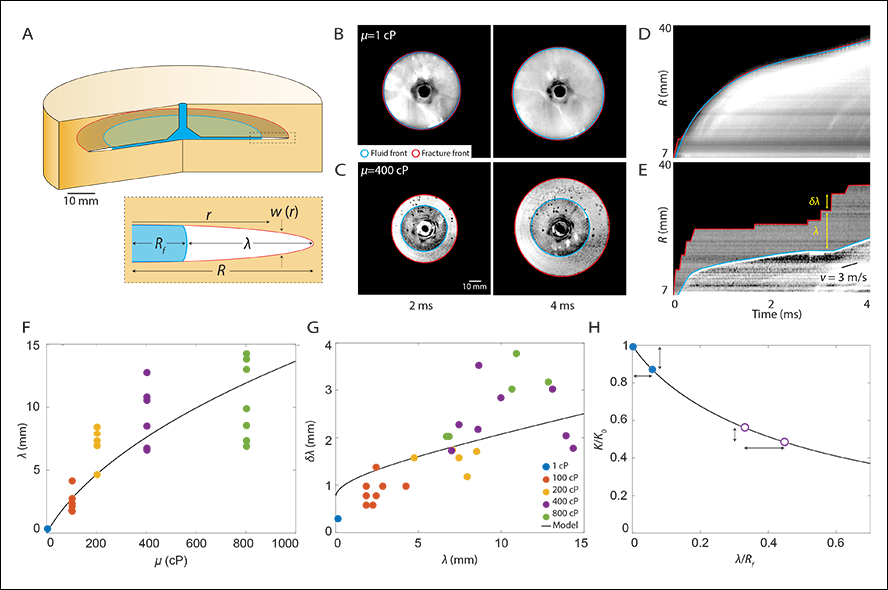Unveiling the dynamics of crack propagation

By Cansu Birsen, E25
Fractures, those intricate lines marking material failure, have always captivated scientists. Although fracturing in a two-dimensional plane is a well-studied concept, realistic fracture behavior in three-dimensional planes is still poorly understood. That's what led a cross-institutional team of researchers, including Associate Professor Robert Viesca of the Tufts Department of Civil and Environmental Engineering, to work on how cracks propagate in three-dimensional space.
The team's findings were recently published in the journal Nature Physics in a paper titled "Propagation of extended fractures by local nucleation and rapid transverse expansion of crack-front distortion". The team included first author Thomas Cochard of Harvard University and China University of Petroleum, and corresponding authors Ilya Svetlizky and David A. Weitz of Harvard University and Lizhi Xiao of China University of Petroleum.
The study revealed a fundamental mechanism: fractures move forward with a localized rupture followed by rapid transverse expansion, akin to a wave racing across the surface. Imagine cracks creeping forward, not in a steady march but with sudden bursts of movement. Theorists have long pondered the mechanisms underlying such motion, imagining a process where small bumps widen, eventually pushing the entire crack front forward. Now, laboratory experiments conducted by the multidisciplinary team directly confirmed this phenomenon, providing concrete evidence of crack motion in three-dimensional space.
Instead of conventional settings, researchers induced stresses by injecting fluid, a manipulation that allowed them to control the crack advance, into a disc-shaped crack in a brittle polymer. They found that cracks do not move uniformly; instead, they wait, protrude suddenly at a point, and the protrusion swiftly traverses sideways at speeds comparable to a sound barrier.
Understanding crack dynamics holds profound significance, especially in fields like earthquake early warning. By unraveling the mysteries of crack motion, scientists edge closer to deciphering the origins of seismic events. Knowledge of fracture mechanics, especially in this context, has the potential to save lives.
Read the full paper, “Propagation of extended fractures by local nucleation and rapid transverse expansion of crack-front distortion,” and the summary article in Nature Physics. Learn more about Associate Professor Robert Viesca.
Department:
Civil and Environmental Engineering